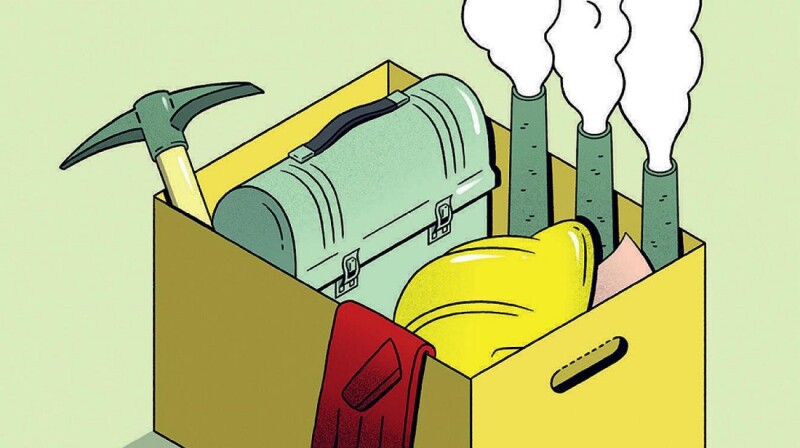Roughly 1.7 million workers are likely to lose their jobs as the US moves away from fossil fuels and toward wind, solar, hydropower, and other renewable energy sources, says Wertheim professor in urban policy Gordon Hanson. The Harvard economist is considering ways to protect these workers from the inevitable economic shocks of the so-called “energy transition.”
Among them are 729,000 people who extract and refine coal, gas, and oil; 200,000 who work in coal- and gas-fired electric power plants; and 731,000 in energy-intensive industries such as aluminum smelting, or iron, steel, and paper manufacturing, which require a reliable source of nearby power. A majority of these workers, Hanson says, are men without college degrees who make relatively high wages. Many live in small- and medium-sized communities, such as Odessa, Texas; Hobbs, New Mexico; and Brewster County, Texas—the US commuting zones that had the highest shares of employment in fossil fuel extraction, according to 2019 figures. Managing the energy transition is not as simple as shifting workers to jobs in renewable energy; fewer laborers are needed to generate energy from solar or wind.
Hanson’s attention to these workers is part of his work through the Harvard Kennedy School’s Reimagining the Economy project, which he codirects with Dani Rodrik, Ford Foundation professor of international political economy.
“We’re looking for ways to help distressed economic regions”—particularly areas that have lost manufacturing jobs in recent decades, Hanson said—“to turn themselves around.”
The example of coal provides a useful warning. The 1983–1993 coal bust, when falling oil prices diverted the economy from coal to oil, and a later bust in the 2010s, when hydraulic fracturing flooded the market with large supplies of natural gas (further weakening demand for coal), dramatically reduced mining-related employment in Kentucky, Ohio, Pennsylvania, and West Virginia. This was not a shift to wind or solar, “but we get to see in miniature what happens,” Hanson said, “when you rapidly move from one energy source to another.”
As coal-mining jobs disappeared, many younger workers departed to pursue careers elsewhere. “But it’s not everybody who’s moving,” he stressed. “We have this sense that America is an incredibly mobile country: When economic opportunity disappears in one place, people just pick up and move to where economic opportunity is happening.” Yet research during the past 20 years confirms that only the most educated workers relocate in response to local unemployment. In the case of the coal bust, “older, sicker, poorer individuals” stayed in place, Hanson said, without the savings to move, pursue job training, or start new businesses.
These communities have still not recovered. “Job loss is scarring,” he continued. Not only do individual earnings decline in the short term, but “they end up being 5 to 8% lower forever.” In communities with high rates of unemployment, housing prices drop and home equity, a valuable source of credit, disappears.
Given the potential harm, it’s not enough to simply “let markets work,” Hanson said. In a chapter he contributed to a book recently published by the Aspen Institute, he explores how existing tools could be used to buffer the shocks of the energy transition.
For example, current federal- and state-funded unemployment insurance will be an important first step, but programs need to be flexible enough to respond to local conditions, temporarily offering more generous and longer-lasting payments when communities experience intense joblessness. Many state programs are already designed so certain conditions trigger increased unemployment insurance. But state rules are often so restrictive, he adds, that unemployed people may never receive the increased help.

